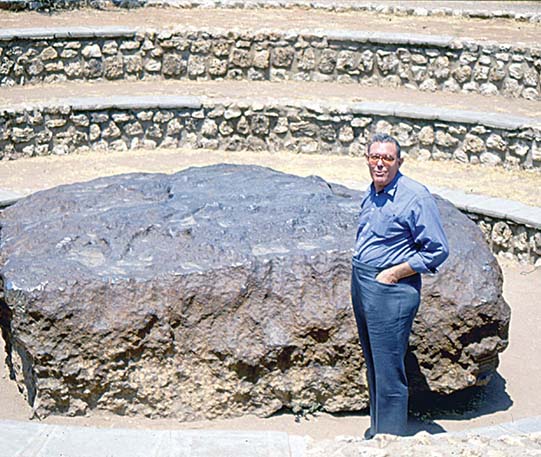
By Bob Jones
The science mineralogy and the mineral collecting hobby lost one of their most active stalwarts and contributors when my good friend Richard “Dick” Bideaux passed away at age 69. His contributions to mineralogy, the space program, and the understanding of ore bodies’ geology and mineralogy literature and collecting are unrivaled. Dick lived in Tucson all his life except when in graduate school at Harvard and working for Jet Propulsion Laboratories in California.
I got to know Dick in 1960 through our involvement with the Tucson Gem & Mineral Show®. I helped Scott Williams, a dealer, and Dick was a very active member of the show committee. Bideaux’s direct involvement as a committee member was the primary factor in raising that Show from a club event to the world’s greatest mineral show. I was also fortunate to collect with Dick and travel to far off lands visiting museums, mines, and noted mineral people.
Traveling with Dick was like having a personal tour guide. He would study the area thoroughly in advance of departure, including every museum and every museum collection. Plus, he would expect you to know something about your destinations. We purposely went during the dry season for our African trip and chose a camp with a year-round water hole. Each night it was easy to see every creature in the area visited the water hole, thanks to the light. The visitors to the water hole took turns, starting with elephants and ending with small creatures.
Preparation and Planning Are Key
Another of Dick’s planning methods and measures involved supplying me with books he had read, so I could suggest things to include in our planning. I recall wanting to visit the Hoba meteorite in Nambia because I remember seeing a photo of it when I was a child. It is one of the largest intact nickel-iron meteorites, and we made sure we saw that phenomenon. Other once-in-a-lifetime destinations included a cheetah rescue sanctuary, where injured cats were treated and later released, and a vast salt mine where ocean waters are evaporated in huge shallow ponds to mine the salts. Adding to the salt mine’s wonder are thousands of pink flamingoes present at the site. They live on the algae in the brine.
Living in Tucson, Dick developed an interest in minerals as a teenager and ultimately drew his father George into the hobby. So into the hobby that George even opened a small mineral business in 1965. He exhibited at the first Tucson show in 1955, while still a teenager, and won a ribbon. His interest in minerals led him to enter the University of Arizona Geology Engineering program after high school.
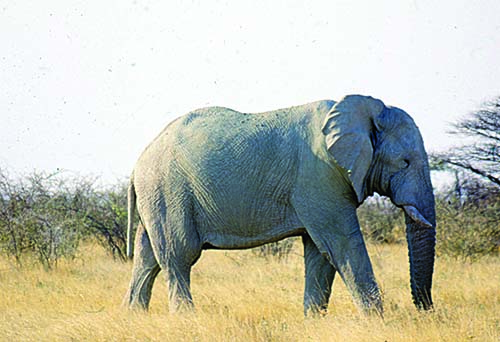
Bob Jones
Dick’s experience collecting minerals was helped through his father’s entrepreneurial presence as the owner of many small-town newspapers and political connections. When miner friends hit a mineral jackpot, they would call George, and Dick would head out to the location and collect. An example of this happened in the mid-1950s when a miner working the Glove mine south of Tucson opened a small cavern lined with gorgeous wulfenite crystals. He invited Dick and a partner to mine out dozens and dozens of flats of superb honey-colored wulfenite specimens. This find is still recognized as the great Glove Mine wulfenite find.
Dick repeated this success when a miner notified his father that a huge watercourse lined with wulfenite was opened at the Defiance mine on a Friday. Dick, with Dick Jones, his collecting partner, had just the weekend to collect. They worked night and day and filled two vehicles and a small trailer with boxes of well-known arrowhead-shaped tan wulfenite clusters. Like specimens from the Glove Mine find, these unique Defiance mine wulfenite still shows up on the market today.
Creating Opportunities for All to Enjoy
Dick’s varied experiences, travel, and constant desire to learn benefitted the mineral club he was a member of — the Tucson Gem and Mineral Society. He arranged for the Smithsonian’s Paul Desautels to exhibit and lecture at the Tucson Show in 1961, which was something the Smithsonian had never done. In 1972, Dick invited and hosted his friend, Dr. Peter Embrey of the British Museum of Natural History, as a lecturer at the Show. Dick also arranged for Pierre Bariand of France’s revered Sorbonne to participate in the Show.
Dick did not talk about much about his job with Jet Propulsion Laboratories, Pasadena, California. However, his accomplishments on that front also were many. He was part of the early days of lunar exploration with the Surveyor satellites to the Moon. Dick’s job was to process the first photos sent back to earth during those lunar missions. He formed and honed his skills during those early days of computer technology while in the army. After his time at Jet Propulsion Laboratories, he went on to work with some partners to open a new computer business, “Computing Associates.” Ultimately, the firm developed a major geological mining program. Dick explained the program’s operation this way; the purpose was to compile and sort all the known data about an ore deposit gathered through deep core drilling. The program could predict the quantity, variety, and value of those unseen ores to determine the viability of opening a mine. At least that’s how I understood it.
Dick’s computer skills helped develop a history-making series of mineral references, the six-volume “Handbook of Mineralogy,” an immense resource that combines regular mineralogy information with computer references and research. I enjoyed traveling with Dick during some of his research work on this project. The process included visiting premiere museums, like the British Museum of Natural History, the Sorbonne, Paris’s Natural History Museum, and others. While attending these places, curators would give us free rein to explore collections, take notes for his Handbook series, and me for my Rock & Gem writings.
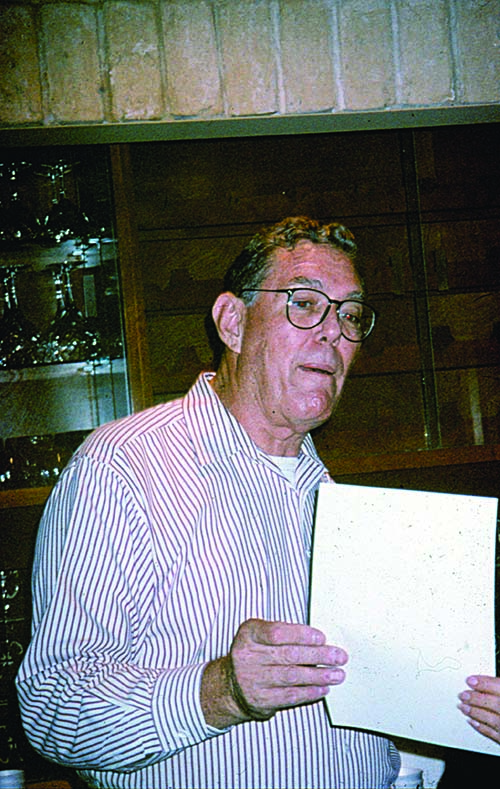
Another vital contribution Dick made to our hobby was helping create the Mineralogical Record magazine. The publication was the idea of John White, assistant curator in the Gem and Mineral Division of the Smithsonian Museum. John felt there was a need for a magazine that was more technical than hobby magazines but written for the serious amateur collector. Since Dick, and his father George, lived in Tucson and were active in the then early years of the Tucson Show, he shared his idea with Dick. The father-son duo promptly invited a large group of professionals and serious collectors to their home one evening during the Show, intending to gather support for John’s idea. The group included Arthur Montgomery, who had already promised John financial support. The meeting was a huge success, as all expressed a need for such a magazine and promised both financial and written support. Some of us wrote articles, and others promoted the magazine.
That same meeting also resulted in the formation of a new organization, Friends of Mineralogy, which developed regional chapters, produced a column in Mineralogical Record, and produced informational books on collecting areas.
Drawing Inspiration From Experience
When Dick’s father died in the 1970s, Dick took over his dad’s mineral business. He also continued going out in the field and gathering more information to revise the book Mineralogy of Arizona, which he co-wrote in 1979 with the University of Arizona Professor John Anthony and mineralogist Sid Williams. Mineralogy of Arizona was a much-needed reference covering all the known minerals found in the state. It also included discussions of localities. Many local collectors contributed information, helping make the text as complete as possible. When Dick would hear of an obscure locality, he would visit, collect, and gather information, and I helped when I could.
The remarkable career of Dick Bideaux influenced every aspect of the mineral sciences and our hobby. His written works ranged from informal discussions of crystals, minerals, and localities for amateur collectors to carefully documented research for scientific journals. His immense knowledge of mineralogy and all aspects of it were of great help to the Tucson show committee, which consisted of local volunteers limited in the scope of their world travel experiences in the early days. By bringing his wide range of contacts to bear, he gave the show committee a remarkable resource most club shows can only hope to have.
As a travel companion, Dick was a constant resource of information and encouragement. As a friend, he was generous to a fault. More than once, I’d see him buy a lovely specimen of something, knowing he had much better in his collection. When I’d ask him, he would name the friend he was buying it for, usually a young collector.
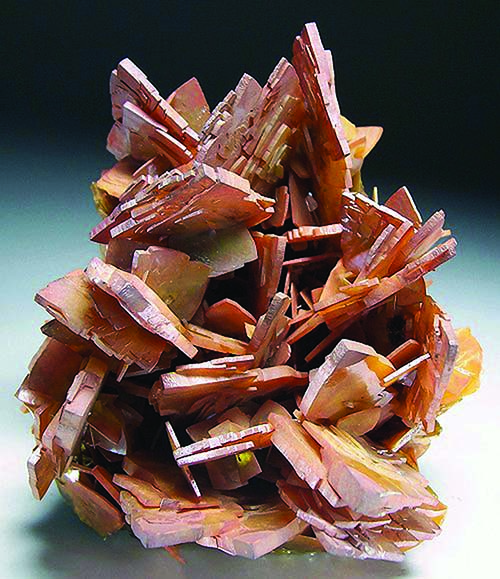
After spending weeks traveling with him, days collecting, and hours talking minerals, I came to realize he expected the best from his friends, and more importantly, he expected the best from himself in whatever he did. There has only been one Dick Bideaux. More’s the pity!
Author: Bob Jones
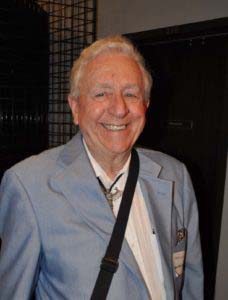 Holds the Carnegie Mineralogical Award, is a member of the Rockhound Hall of Fame, and has been writing for Rock & Gem since its inception. He lectures about minerals, and has written several books and video scripts.
Holds the Carnegie Mineralogical Award, is a member of the Rockhound Hall of Fame, and has been writing for Rock & Gem since its inception. He lectures about minerals, and has written several books and video scripts.
If you enjoyed what you’ve read here we invite you to consider signing up for the FREE Rock & Gem weekly newsletter. Learn more>>>
In addition, we invite you to consider subscribing to Rock & Gem magazine. The cost for a one-year U.S. subscription (12 issues) is $29.95. Learn more >>>















